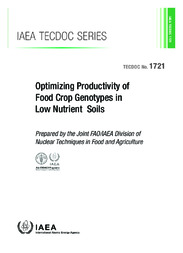Phosphorus use efficiency by brazilian common bean genotypes assessed by the 32P dilution technique.
Phosphorus use efficiency by brazilian common bean genotypes assessed by the 32P dilution technique.
Author(s): FRANZINI, V. I.; MURAOKA, T.; ADU-GYAMFI, J. J.; LYNCH, J. P.
Summary: The objectives of this work were to identify the most efficient common bean (Phaseolus vulgaris L.) genotypes on phosphorus (P) utilization, and verify if P from the seed affects the classification of common bean genotypes on P uptake efficiency when the 32P isotopic dilution technique is used. The experiment was conducted in a greenhouse, and plants were grown in pots with surface samples of a dystrophic Typic Haplustox. The treatments consisted of 50 common bean genotypes and two standard plant species, efficient or inefficient in P uptake. The results were assessed through correlation and cluster analysis (multivariate). Sangue de Boi, Rosinha, Thayú, Grafite, Horizonte, Pioneiro and Jalo Precoce common bean genotypes were the most efficient on P uptake, and Carioca 80, CNF 10, Pérola, IAPAR 31, Roxão EEP, Aporé, Pioneiro, Pontal, Timbó and Rudá were the most efficient in P utilization. The P derived from seed influences the identification of common bean genotypes for P uptake efficiency.
Publication year: 2013
Types of publication: Book sections
Unit: Embrapa Eastern Amazon
Observation
Some of Embrapa's publications are published as ePub files. To read them, use or download one of the following free software options to your computer or mobile device. Android: Google Play Books; IOS: iBooks; Windows and Linux: Calibre.
Access other publications
Access the Agricultural Research Database (BDPA) to consult Embrapa's full library collection and records.
Visit Embrapa Bookstore to purchase books and other publications sold by Embrapa.

